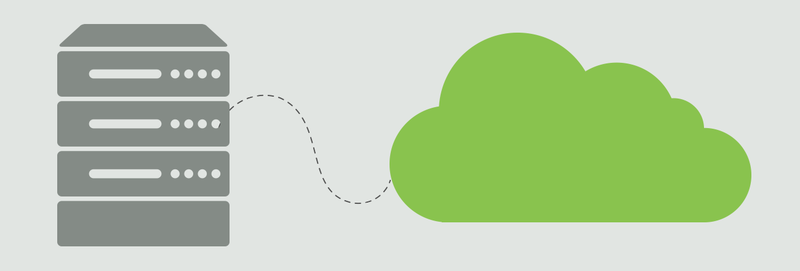
For most organizations, cloud backup and Backup as a Service (BaaS) solutions are quickly replacing traditional data backup solutions. Why the mass adoption? In this post, I’ll quickly detail the underlying reason for the shift, define the scope of BaaS and other cloud backup solutions, and provide a quick list of qualities you should look for in potential providers.
The 3-2-1 Rule of Backups
Data is quickly becoming a company’s most valuable asset (besides its people, of course). And while many of us are backing up our data on-premise, there is more we can be doing to ensure our critical data has the redundancy and security it needs to mitigate an ever increasing risk landscape.
As we covered in a previous post, on premise backups only go so far in protecting us from unforeseen downtime. On premise backups are a start, but a more comprehensive strategy is needed. After a bit of searching for backup strategies on the web, you will likely come across a common term: the 3-2-1 rule.
Its meaning is a relatively straightforward: Store three copies of your data, two of them on different medium and one of them offsite. While this looks easy on paper, there are actually quite a few considerations that must be planned out to achieve such levels of protection.
Does your current backup software allow you to protect physical and virtual machine data? Does it have the ability to send data to an off-site repository? Do you have to rely on tape backups and an external security service to come pick up physical tapes or drives? Should you send our backups to AWS or Azure? If you are asking yourself “Where do I even start?,” you’re in luck.
Understanding Backup as a Service (BaaS)
With continued growth of services we consume through the internet, the “cloud” has given rise to numerous Cloud Service Providers who offer a wide variety of services to businesses and consumers. These “as a Service” products work especially well for organizations who lack the infrastructure or expertise to deploy such services in house. This includes Backup as a Service.
Backup as a service (BaaS) is a strategy for backup and recovery that involves purchasing these services to be managed by a Cloud Service Provider. Instead of performing backup with centralized on-premises equipment and personnel, BaaS connects IT systems to a private, public or hybrid cloud managed by the Cloud Service Provider. Why worry about rotating and managing tapes or hard disks to get your data offsite, when data storage administrators can offload maintenance and management to the provider?
With a Backup as a Service offering, many of the complexities of a varied backup strategy are offloaded onto the service provider. In return, the service provider may charge a monthly rate depending on the level of service offered. Take the offsite repository for example. In order to get a copy of your backup data offsite, you would need to invest in IT facilities, hardware, and support personnel if you were to do it yourself.
Advantages of Cloud Backups and Backup as a Service
With a Cloud Service Provider however, the following list of benefits can be applied to your new backup strategy:
- No upfront investment in infrastructure or expertise needed
- Pick and choose from varying levels of managed services
- Store data in the cloud on enterprise-grade equipment
- Data is protected in secure facilities or data centers
- Guaranteed SLAs and support
- Access to technology for monitoring and automation
Use this list to evaluate different Cloud Service Provider offerings and make the best choice for your business. Achieving a 3-2-1 backup strategy has never been easier thanks to Backup as a Service offerings provided by service providers like INAP!
Updated: January 2019



